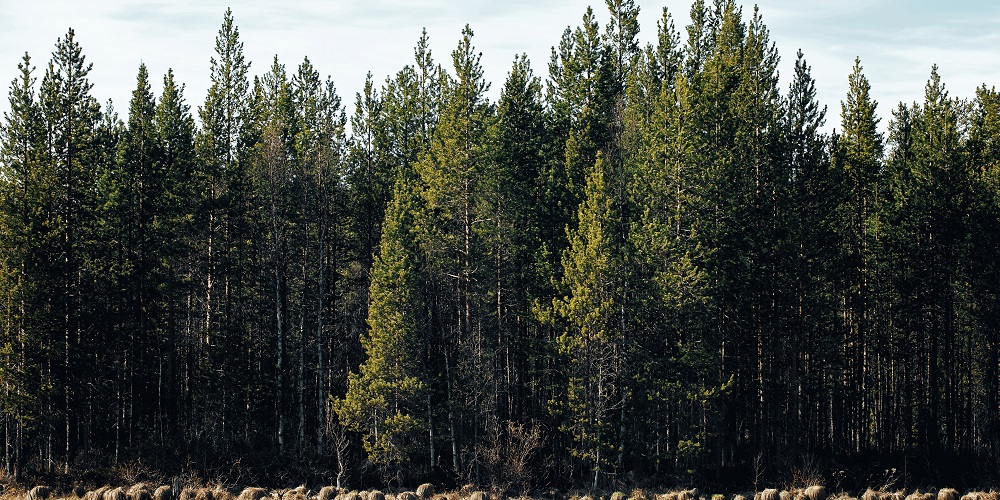Question 1 : In your opinion, what are the main benefits of planted forests in addressing current environmental challenges, such as climate change and biodiversity loss ?
We are facing a climate emergency resulting from decades of fossil fuel use. The demand for these products is estimated to increase and without plantations, natural forests would have to meet theses increasing demands. European forests fall under the major category of Land Use Land Use Change and Forestry (LULUCF) and are often valued for being able to compensate for “difficult-to-decarbonise” sectors such as Agriculture, Industrial Processes or Energy. However, it is important to stress the impact of plantations exceeds by far their carbon sink capacity.
Plantations can contribute to the provision of regulatory and social ecosystem services even when focused on wood provision. Moreover, plantations are a tool for bringing degraded land back into production and improving ecosystem service provision, while contributing to reduce wood imports into Europe and therefore reducing deforestation in other parts of the world. Thus, planted forests, when established in the right places and properly managed, have a strong potential for mitigating climate change by storing carbon, helping maintaining or even increasing biodiversity, promoting the resilience to various hazards (e.g. climate extremes, biotic threats, fires), while also contributing to sustainable economic growth. Wood-based products contribute to a greener and more circular economy and the extended forest-based value chain supports millions of jobs.
Question 2 : In Europe, what are the best practices to ensure sustainable management of planted forests ?
The sustainable management of planted forests should start with a good integration with stakeholders to guarantee a good connection between science and practice through a coordination between research, guidance and regulation. In EU countries with a high share of private ownership, one of the biggest challenges is working with small forest owners, in particular in areas where forestry is not profitable. Assisting managers to choose the right species/provenance (please follow the reinfforce project) for the specific location and helping to distribute plantations in mosaic across the landscape are the basis for meeting the 3 pilars of sustainability.
It is important that different stakeholders can gain sufficient understanding of plantation forestry practices so that these forests can cope with climate change and limit the threats from (a)biotic risks in order to achieve a balance of goods and ecosystem services. Plantations are known for their intensive management, but applying the right intensification level, which guarantees production without harming the environment, is key to the sustainable supply of goods and services required by society.
So far, growing stock in the EU is still growing, but it is vital to ensure that harvesting is less than the annual growth to secure the availability of resources, the maintenance of biodiversity and in the long-term bring us closer to climate neutrality. Sustainable management should be supported with well-targeted policy measures keeping in mind that “one-size-fits all” solutions must be avoided since, for example, “Portuguese cork forests cannot be compared to the coniferous forests in Finland”.
Question 3 : What are some common misconceptions about planted forests that you would like to clarify ?
Planted forests are generally even-aged monocultures (forests composed solely of the same tree species, of the same age) resulting from a human decision to plant seedlings or seeds under intensive management. In the past, these forests were sometimes established based on poor tree species selection and inappropriate silviculture that disregarded aspects considered essential by local communities. This might have contributed to the negative view of plantation forests and for contributing to a negative view of plantation forestry. Traditional commercial plantations can be tedious, but their regular, repeated structure facilitates management in general and timber removal operations in particular, with final felling, which consists of removing all trees before replanting, being the most common approach, even if these practices are not always understood by the public.
However, planted forests if planted and managed taking into account environmental impacts, trade-offs among different ecosystem services, and stakeholder opinions should not be a problem, but part of the solution. For example, ecosystem restoration programs often make use of forests planted for protection or restoration purposes, which can even be managed to reach a maturity resembling that of a naturally regenerated forest. Even intensively managed forest plantations have a lower impact on land use than agricultural systems, as pesticide use is very limited. Nevertheless, it is true that commercial plantations have a more limited capacity to support biodiversity than natural forests.
Over the past decades, research seems to indicate that complexity, both in terms of tree species diversity and structural heterogeneity, may have the potential to enhance forest resilience to global changes. But, there are still a lot of questions to be answered such as whether diversity should be created at planting or promoted via management or should it be promoted at tree level, landscape level or both. A dedicated IUFRO Task Force will study the consequences of adding complexity to plantation forests, and the associated impacts on timber supply chains, exploring the trade-offs between resilience and wood production.
Question 4 : How do you envision the future of cultivated forests in Europe in the coming decades, given societal expectations, industrial needs, and the increasing impact of climate change ?
I believe the central question will be how to address the different and increasing demands from forests under future uncertainty. Forests are managed with different, often concurrent, objectives leading inevitably to trade-offs. Under the framework of the bioeconomy the demand for timber, paper, fuelwood, and other biomaterials is expected to grow, but so are the the biodiversity goals and the expections regarding forests’ ecological funtions.
Reaching a circular and sustainable bioeconomy will only be posssible if the area of planted forests continues to increase and if the existing planted forests and forests to be planted in the future, are planned and managed to cope with climate change and to minimize the impacts of the various risks (e.g. pests, pathogens, fires, floods and droughts) so that a balance of ecosystem services can be achieved.
A number of concrete actions will be required among which:
- Effective protection of primary and old-growth forests, essential for achieving Europe’s climate and biodiversity objectives;
- Afforestation and restoration of deforested and degraded areas, with production, conservation and protection objectives;
- Implementation of species-diverse plantations within landscape mosaics to mitigate increasing (a)biotic risks;
- Designing land-use mosaics incorporating forest plantations to enhance ecological integrity and resilience;
- Implement policies to develop certification and payment systems for ecosystem services (biodiversity, carbon, soil protection, etc.) in primary and old-growth forests and plantations;
- Explore the development of shared funding mechanisms to map and protect primary and old-growth forests, so as not to replace these biodiversity hotspots with new plantations;
- Support research and policy measures to implement sustainable management;
Susana Barreiro, President of IEFC

